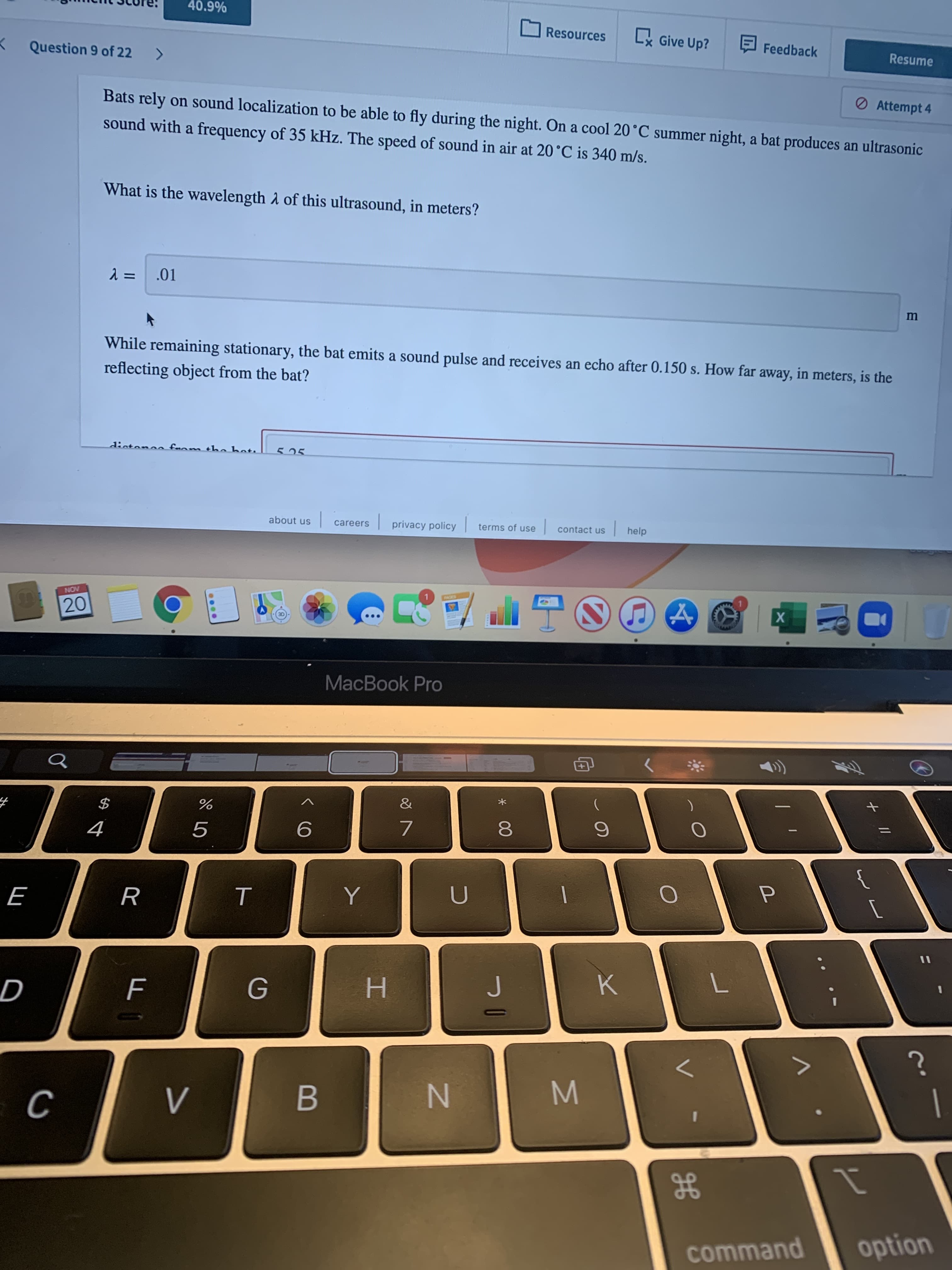O Attempt 4 Bats rely on sound localization to be able to fly during the night. On a cool 20°C summer night, a bat produces an ultrasonic sound with a frequency of 35 kHz. The speed of sound in air at 20°C is 340 m/s. What is the wavelength 1 of this ultrasound, in meters? %3D .01 m While remaining stationary, the bat emits a sound pulse and receives an echo after 0.150 s. How far away, in meters, is the reflecting object from the bat?
O Attempt 4 Bats rely on sound localization to be able to fly during the night. On a cool 20°C summer night, a bat produces an ultrasonic sound with a frequency of 35 kHz. The speed of sound in air at 20°C is 340 m/s. What is the wavelength 1 of this ultrasound, in meters? %3D .01 m While remaining stationary, the bat emits a sound pulse and receives an echo after 0.150 s. How far away, in meters, is the reflecting object from the bat?
Related questions
Question

Transcribed Image Text:O Attempt 4
Bats rely on sound localization to be able to fly during the night. On a cool 20°C summer night, a bat produces an ultrasonic
sound with a frequency of 35 kHz. The speed of sound in air at 20°C is 340 m/s.
What is the wavelength 1 of this ultrasound, in meters?
%3D
.01
m
While remaining stationary, the bat emits a sound pulse and receives an echo after 0.150 s. How far away, in meters, is the
reflecting object from the bat?
Expert Solution
This question has been solved!
Explore an expertly crafted, step-by-step solution for a thorough understanding of key concepts.
This is a popular solution!
Trending now
This is a popular solution!
Step by step
Solved in 2 steps with 1 images
